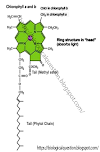BLOOD CIRCULATORY SYSTEM OF MEN
The internal transport or blood circulatory system of man is divided into cardiovascular system and lymphatic system. The cardiovascular system consists of a strong muscular heart, three kinds of blood vessels: arteries, capillaries, veins and blood. The study of the diseases of cardiovascular system is called angiology.
Heart :
The heart functions as a pump and responsible for the circulation of the blood through the blood vessels. The human heart is a hollow, fibromuscular organ. The Greek name for the heart is cardia from which we have the adjective cardiac. The Latin name for the heart is cor from which we have adjective coronary. The Men heart has the shape of a cone. The blunt, rounded point of the cone is the apex and the larger flat part at the opposite end of the cone is the base.
Structure of Human Heart :
The heart is located in the thoracic cavity between the lungs. The pericardium is a closed sac that surrounds heart. It consists of two parts; the outer part and inner part. The outer part consists of inelastic white fibrous tissue. The inner part is made up of two membranes. The inner membrane is attached to the heart and the outer one is attached to the fibrous tissue. Pericardial fluid is secreted between them and reduces the friction between the heart wall and surrounding tissues when the heart is beating. The inelastic nature of the pericardium as whole prevents the heart from being overstretched or overfilled with blood.
Human Heart, External View
The heart consists of four chambers: two atria (meaning, entrance chamber) and two ventricles (meaning, belly). The atria lie above the ventricles. The heart wall is composed of the three layers of tissue: The epicardium, the myocardium, and the endocardium. The epicardium is a thin serous membrane comprising of the smooth outer surface of the heart. The thick middle layer of the heart, the myocardium, is composed of cardiac muscle cells. The smooth inner surface of the heart chambers is the endocardium, which consists of simple squamous epithelium over a layer of connective tissue. The heart valves are formed by a fold of the endocardium, making a doul Player of endocardium with connective tissue in between.
Dissection of a human heart, as seen from the front, with the ventral part of both atria and both ventricles removed
The thickness of the walls of each chamber is different: The atria have comparatively thin walls as they only have to force blood into the ventricles and this does not require much power. On the other hand, the ventricles have to force blood out of the heart hence they have relatively thick walls, especially the left ventricle which has to pump blood around the whole body. The right ventricle has thinner walls than the left ventricle in a ratio of 1:3, it pumps blood to the lungs, which are at a short distance from the heart.
The right atrium receives the superior vena cava, the inferior vena cava, and the coronary sinus (the coronary sinus is an additional opening into the right atrium that receives venous blood from the myocardium of the heart itself). The left atrium receives the four pulmonary veins. The two atria are separated from each other by the interatrial septum. The atria open into the ventricles through atrioventricular canals. The right ventricle opens into the pulmonary trunk, and the left ventricle opens into the aorta. The two ventricles are separated from each other by the interventricular septum.
An atrioventricular valve is on each atrioventricular canal and is composed of cusps. or flaps. The atrioventricular valve between the right atrium and the right ventricle has three left ventricle has two cusps and is therefore called the bicuspid or mitral valve. Each ventricle cusps and is called the tricuspid valve. The atrioventricular valve between the left atrium and left ventricle has two cusps and is therefore called the bicuspid or mitral valve. Each ventricle contain cone-shaped muscular pillars called papillary muscles. These muscles are attached by thin, strong connective tissue strings called chordae tendineae to the cusps of the atrioventricular valves. The papillary muscles contract when the ventricles contract and prevent the valves from opening into the atria by pulling on the chordae tendineae attached to the valve cusps. The aorta and pulmonary trunk possess aortic and pulmonary semilunar.
Thank you for Reading the Article.




.png)

.png)
0 Comments